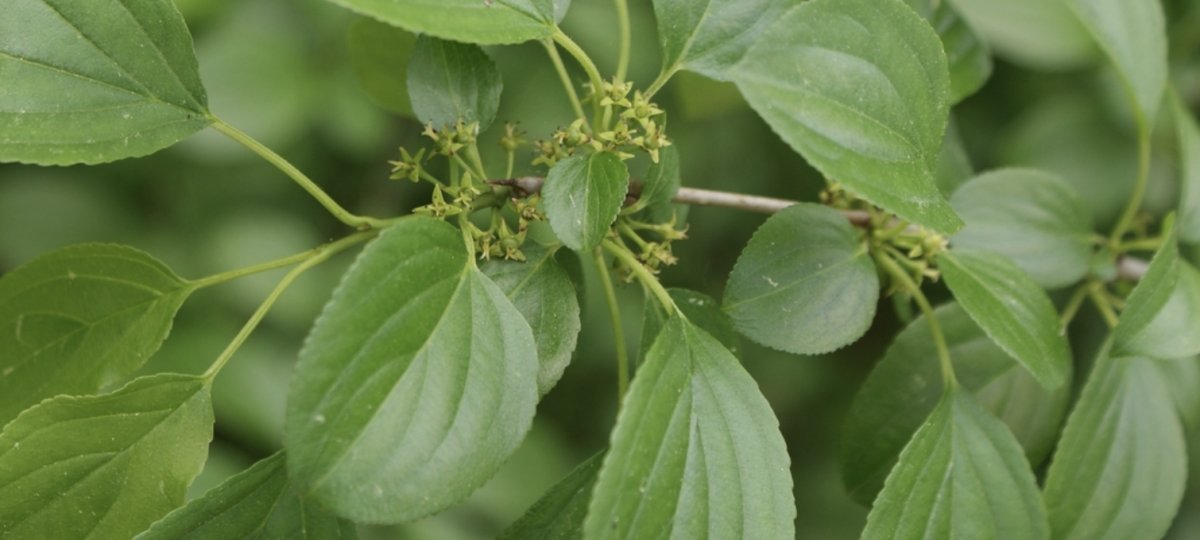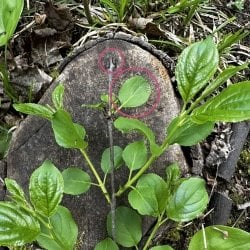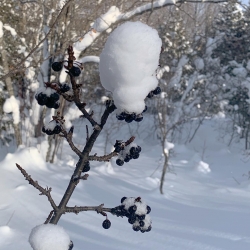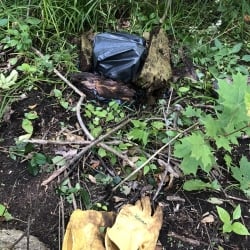Common buckthorn leaves, flowers, and characteristic spine at the end of the twig
Image credit: Kenraiz Krzysztof Ziarnek, North Carolina State, Plant Toolbox

Common buckthorn leaves, flowers, and characteristic spine at the end of the twig
Image credit: Kenraiz Krzysztof Ziarnek, North Carolina State, Plant Toolbox
Common buckthorn, a woody shrub/small tree in the Rhamnaceae family, is an understory invasive that produces large amounts of seeds and outcompetes many native species. Additionally, this species is both sun and shade tolerant and can live in many different soil, moisture, and habitat conditions. Identifying features include:
Note: This plant can be confused with native cherries like pin cherry and chokecherry. Note that cherries will have two black spots (glands) on the leaf petiole (stem) near the base of the leaf and buckthorn will not.
For more information visit Woody Invasives of the Great Lakes (WIGL) Collaborative and Midwest Invasive Species Information Network (MISIN).

Oval-shaped leaves and truncated thorn at end of stem
Image credit: Sigrid Resh

Drupes persist on branches through the winter
Image credit: KISMA
Buckthorn is a highly aggressive species that produces copious amounts of seeds and saplings and is able to take over an understory relatively quickly. Here at KISMA, buckthorn is another major invasive species that we have at multiple sites. It’s crucial to revisit buckthorn sites as their seeds are viable in the ground for multiple years and it’s important to remove all seedlings. When managing common buckthorn, KISMA prioritizes the removal of seed trees and satellite populations first, to prevent further spread of the species.
Note: It's very important to remove seeds and seed-bearing trees first, as this is the main reproduction strategy of buckthorn.

Securely fastened plastic bag used to smother buckthorn stump sprouts after cutting
Image credit: Sigrid Resh
Great native alternatives to common buckthorn would be the native cherries like pin cherry (Prunus pensylvanica) and chokecherry (Prunus virginiana). Serviceberry (Amelanchier sp.) is also a great alternative providing a well needed food source to native wildlife. Other species like highbush cranberry (Viburnum trilobum) and other native shrub species are great as well.